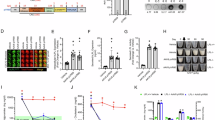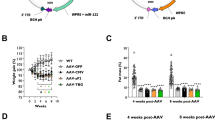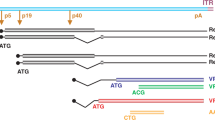Abstract
Plasma apolipoprotein AI (apoAI) and lecithin-cholesterol acyltransferase (LCAT) play important roles in reverse cholesterol transport, promoting the removal of excess cholesterol from peripheral cells and reducing formation of atherosclerotic lesions. Gene augmentation of either apoAI or LCAT, or both, are thus attractive targets for prevention or treatment of atherosclerosis. With the eventual aim of safe and efficient gene delivery to skeletal muscle, our chosen secretory platform for systemic delivery of anti-atherogenic proteins, we have constructed conventional and AAV-based plasmid vectors containing human apoAI or LCAT cDNAs; their efficacy was tested by lipoplex transfection of mouse C2C12 muscle cells or human 293 cells. The secretion of apoAI or LCAT by transduced cultures was two- to five-fold higher using AAV-based plasmid vectors than conventional plasmid vectors. Additionally, cells transfected with a bicistronic AAV-based vector containing an internal ribosome entry site (IRES) efficiently expressed both apoAI and LCAT simultaneously. Furthermore, AAV-based vector sequences were retained by host cells, whereas those of conventional plasmid vectors were lost. These studies indicate that ectopic overexpression of apoAI and LCAT in muscle tissue using AAV-based plasmid vectors might provide a feasible anti-atherogenic strategy in vivo.
This is a preview of subscription content, access via your institution
Access options
Subscribe to this journal
Receive 6 print issues and online access
$259.00 per year
only $43.17 per issue
Buy this article
- Purchase on SpringerLink
- Instant access to full article PDF
Prices may be subject to local taxes which are calculated during checkout
Similar content being viewed by others
Author information
Authors and Affiliations
Rights and permissions
About this article
Cite this article
Fan, L., Drew, J., Dunckley, M. et al. Efficient coexpression and secretion of anti-atherogenic human apolipoprotein AI and lecithin-cholesterol acyltransferase by cultured muscle cells using adeno-associated virus plasmid vectors. Gene Ther 5, 1434–1440 (1998). https://doi.org/10.1038/sj.gt.3300746
Received:
Accepted:
Published:
Issue date:
DOI: https://doi.org/10.1038/sj.gt.3300746
Keywords
This article is cited by
-
Efficient gene transfer in skeletal muscle with AAV-derived bicistronic vector using the FGF-1 IRES
Gene Therapy (2008)
-
Immune responses to adeno-associated virus and its recombinant vectors
Gene Therapy (2003)
-
Inhibition of atherosclerosis in apolipoprotein-E-deficient mice following muscle transduction with adeno-associated virus vectors encoding human apolipoprotein-E
Gene Therapy (2002)
-
Adeno-associated virus-based vectors in gene therapy
Journal of Biomedical Science (2000)
-
Gene therapy for atherosclerosis and atherosclerosis-related diseases
Current Atherosclerosis Reports (1999)



